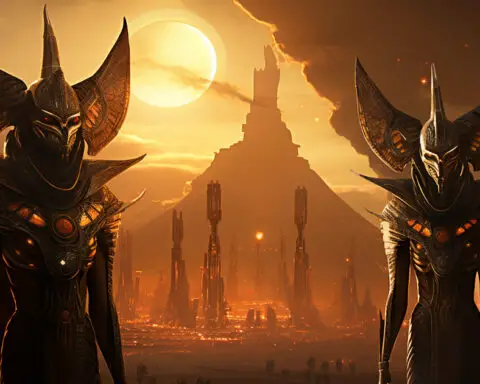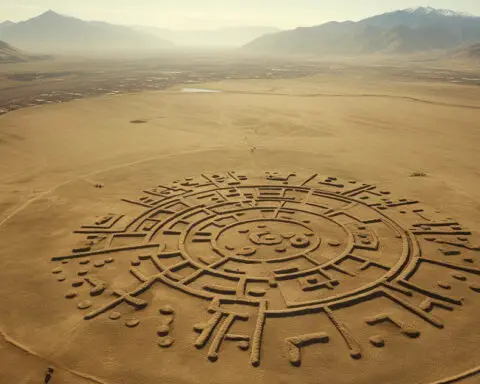Introduction
In February 2019, geologists Dr. Robert Schoch and Dr. Manu Seyfzadeh dropped a bombshell that could reshape our understanding of human history. Their astounding discovery, announced in Boston, Massachusetts, suggests the existence of hieroglyphic writing at the 12,000-year-old archaeological site of Gobekli Tepe in Turkey. If this is indeed true, it would push back the origins of writing by thousands of years, defying conventional wisdom. In this article, we delve into this groundbreaking revelation and explore its implications for our understanding of ancient civilizations and the possibility of ancient aliens.
The Gobekli Tepe Enigma
At Gobekli Tepe, Dr. Schoch and Dr. Seyfzadeh claim to have uncovered evidence of what they can only describe as writing – symbolic notations etched onto some of the site’s ancient stone pillars. This discovery challenges the widely accepted belief that writing and literacy did not exist on Earth until 6,000 to 7,000 years after Gobekli Tepe’s construction. Dr. Schoch boldly asserts that the hieroglyphs they’ve found are not the beginning but rather a glimpse into a far more ancient history of human civilization.

Ancient Astronaut Theorists Weigh In
The idea of lost civilizations and ancient astronauts has long been a fascination for some. According to ancient astronaut theorists, there is a wealth of physical evidence suggesting that advanced civilizations existed much earlier than previously thought. In 2001, Canadian explorer Paulina Zielinski and her team stumbled upon enigmatic formations over 2,000 feet beneath the ocean’s surface off the coast of Pinar Del Río, Cuba. What they found was nothing short of astonishing – a sprawling pyramid city with circular areas, prompting experts to estimate its age at a mind-boggling 50,000 years. These underwater ruins, along with submerged cities in Lake Titicaca, Yonaguni in Japan, Dwarka off the coast of India, and over 200 sunken cities in the Mediterranean, collectively hint at the existence of extraordinary, lost civilizations.
Underwater Ruins Hold the Key
Although the excavation of underwater ruins remains a daunting task due to logistical challenges, researchers hold hope that divers will eventually examine these submerged structures and discover symbols similar to those at Gobekli Tepe. The correlation of hieroglyphs across different underwater sites could strengthen the argument for advanced, prehistoric civilizations that have eluded our historical narratives.
Dr. Robert Schoch’s Sphinx Revelation
Dr. Schoch’s work doesn’t end with Gobekli Tepe. In 1991, he stirred controversy by proposing that the Great Sphinx of Giza was constructed much earlier than previously believed. While mainstream Egyptologists placed its creation around 2500 BC, Dr. Schoch, a geologist, observed a different kind of erosion at the Sphinx’s base – one caused not by wind and sand but by water precipitation. This led him to conclude that the Sphinx’s origins date back to the end of the last Ice Age, approximately 10,000 BC. This revision of history opens up further questions about the advanced knowledge and capabilities of ancient civilizations.
Video:
Conclusion
The discoveries at Gobekli Tepe, the underwater ruins off Cuba, and Dr. Schoch’s Sphinx revelation collectively challenge our understanding of human history. Are we on the brink of uncovering evidence of ancient civilizations with knowledge and capabilities far beyond what we’ve previously imagined? Could the existence of hieroglyphs at Gobekli Tepe be a testament to contact with ancient astronauts or a lost civilization that once thrived on Earth? These tantalizing questions continue to spark the curiosity of researchers and enthusiasts alike, pushing the boundaries of our understanding of our ancient past and the possibility of extraterrestrial influence. As the exploration of these mysteries continues, we may soon find ourselves rewriting the very foundations of our history books.






